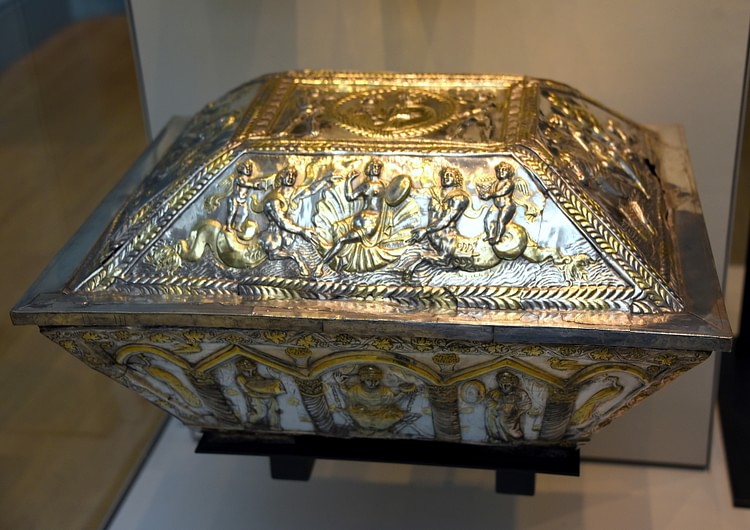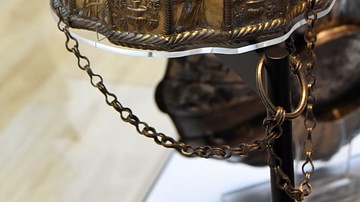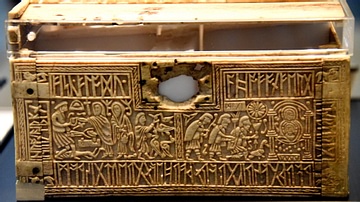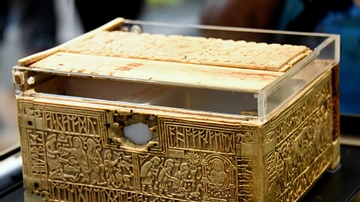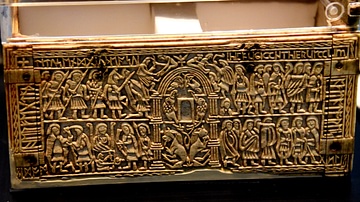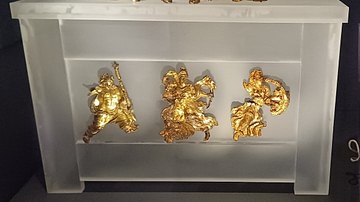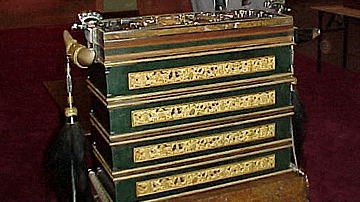Illustration
This casket, inscribed "Secundus and Projecta, live in Christ" in Latin was probably a wedding gift to the couple shown on the top. On the front, the bride adorns herself, while handmaids bring a casket of cosmetics. The lid shows a similar scene, with Venus, goddess of love, fixing her hair as winged Cupids offer her a casket too. This visual comparison between Projecta and the pagan goddess was clearly acceptable to the casket's Christian owners, and was likely intended as flattery. On the back Projecta, walks to a bathhouse attended by handmaids, one of whom carries a casket similar to the Muse Casket. Part of the Esquiline Treasure, which was discovered in the year 1793 CE, at the foot of the Esquiline Hill, Rome, Italy. Circa 380 CE. From Rome. (The British Museum, London).
About the Author
Cite This Work
APA Style
Amin, O. S. M. (2016, September 29). The Projecta Casket. World History Encyclopedia. Retrieved from https://www.worldhistory.org/image/5749/the-projecta-casket/
Chicago Style
Amin, Osama Shukir Muhammed. "The Projecta Casket." World History Encyclopedia. Last modified September 29, 2016. https://www.worldhistory.org/image/5749/the-projecta-casket/.
MLA Style
Amin, Osama Shukir Muhammed. "The Projecta Casket." World History Encyclopedia. World History Encyclopedia, 29 Sep 2016, https://www.worldhistory.org/image/5749/the-projecta-casket/. Web. 30 Jun 2025.

